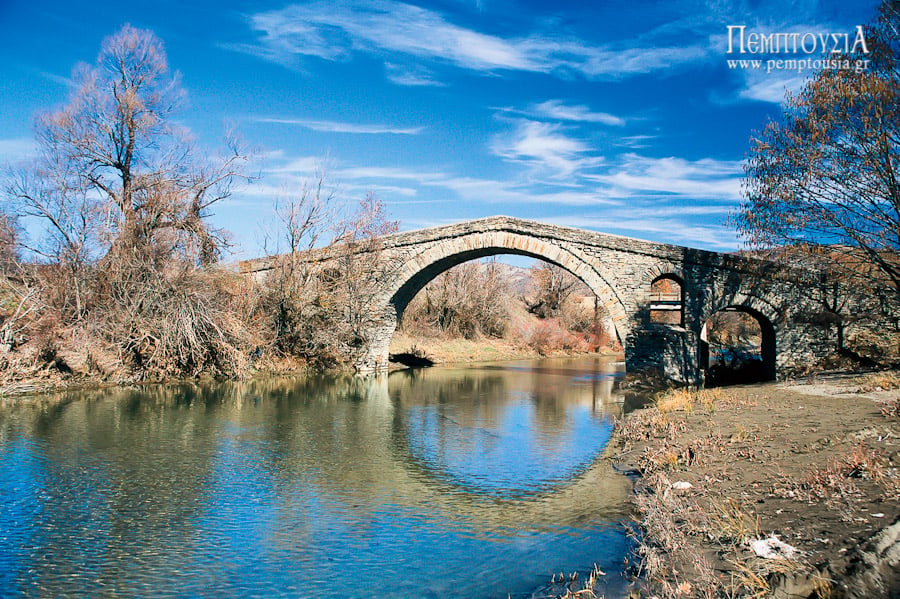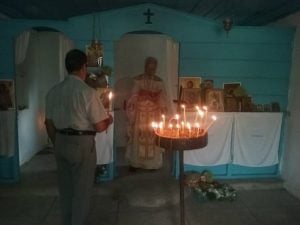One day the renowned Spiritual Father Daniel of Zagora, Thessaly came to the school to hear confessions. Athanasius became Daniel’s disciple, remaining with him until the latter’s death.
Not long after this, Father Daniel decided to go to the Holy Mountain for quiet and spiritual struggles. Athanasius begged his Elder not to leave him, but to take him with him. He expressed the desire to travel to Mt. Athos, the Garden of the All-Holy Virgin, and to become a monk.
Father Daniel instructed Athanasius in the monastic life, which is called “the art of arts, and the science of sciences.” The holy Elder was a perfect teacher who was accomplished in the spiritual life, and Athanasius was an attentive student. After a time Father Daniel tonsured his pupil, and told him he had to learn three important lessons. First, he must cut off his own will. Secondly, he must acquire humility. Finally, he must learn obedience. “If you cut off your will, if you become humble, and if you practice perfect obedience, you will also make progress in the other virtues, and God will glorify you.”
After a further period of testing, Father Daniel tonsured Athanasius into the Great Schema and gave him the name Arsenius. The saint remained on Mt. Athos with his Elder for six years. Then they had to leave the Holy Mountain because of the agitation against the so-called “Kollyvades,” who called for a strict adherence to Holy Tradition. The name comes from the kollyva (boiled wheat) used in the memorial service. Part of the controversy involved the debate on whether it was proper to serve memorial services for the dead on Sunday. The Kollyvades believed that these services were inappropriate for the Day of Resurrection, but should be served on Saturday. The Kollyvades advocated frequent Communion, rather than the practice of receiving the Holy Mysteries only a few times during the year. When Father Daniel and Saint Arsenius left Athos, it was probably due to the animosity of those who opposed the Kollyvades.
Early in 1821, before the Greek War of Independence, they went to the Monastery of Pendeli near Athens. Their stay was a brief one, for Father Daniel forsaw the destruction of the monastery by the Turks.
The two made their way to the Cyclades Islands in the southern Aegean Sea. First they stopped at Paros, perhaps because some of the Kollyvades had settled there. Eventually, they decided to live on the island of Pholegandros. Since there were no teachers for the children, the inhabitants entreated Father Daniel to allow Saint Arsenius to instruct their children. The Elder agreed, and had Arsenius ordained as a deacon. Then he was appointed to the teaching post by the government.
The saint remained there as a teacher from 1829-1840. He taught the required subjects in school, but he also helped his students to form a good character, and to live as pious Christians.
In 1840 Saint Arsenius entered the Monastery of Saint George on the island of Paros. Elder Daniel had passed away in 1837. Before his repose, he asked his disciple to take his remains to Mt. Athos after two years. Saint Arsenius left Plolegandros in obedience to Father Daniel’s request, planning to stop on Paros then continue to the Holy Mountain. On Paros the abbot of Saint George’s Monastery, Father Elias Georgiadis, told Saint Arsenius that it was God’s will for him to remain on Paros. This was providential, because Mt. Athos was undergoing great difficulty after the Greek War of Independence. 3,000 Turkish soldiers occupied Athos, resulting in the departure of 5,000 of the 6,000 monks.
Saint Arsenius joined the community at Saint George’s Monastery on the northern end of Paros. There he found spiritual strivers of true wisdom and excellent conduct, who were worthy models for him to follow.
When he was ordained to the holy priesthood at the age of forty-seven, Saint Arsenius intensified his spiritual efforts. Every day he studied the Holy Scriptures and the writings of the Fathers, and became adept at the unceasing prayer of the heart. He also began to show forth the gift of tears. In this, he resembled his patron Saint Arsenius the Great (May 8), who continuously wept tears of contrition.
Gradually, the inhabitants of Paros came to recognize him as an outstanding Father Confessor and spiritual guide. Whenever he stood before the holy altar, he felt that he was standing before God. He served with great compunction, and his face often became radiant like the face of an angel.
As his virtues became known to people, they flocked to him from near and far. He received all with paternal affection, treating each one with the proper spiritual medicine which would restore their souls to health.
A certain girl from Syros came to the Convent of the Transfiguration to visit her sister, who was a nun. The nun had previously been informed that her sister had fallen into a serious sin. When she learned that the girl was outside the doors of the convent, the nun screamed at her, “Go far away from here. Since you are defiled, you will defile the convent and the nuns.” Instead of feeling pity for her sister, and trying to lead her to repentance, the nun and some of the other nuns struck the poor girl and told her to go away.
The wretched girl cried, “I have made a mistake. Forgive me!”
The nun shrieked, “Go away, or I will kill you to wash away the shame you have brought to our family.”
“Have you no pity, my sister, don’t you share my pain?”
“No,” the nun shouted, “you are not my sister, you are a foul harlot.”
“Where shall I go?” she sobbed.
“Go and drown yourself,” was the heartless reply.
The poor girl fled from the convent, bleeding and wounded, intending to kill herself. At that very moment, Saint Arsenius was on his way to visit the convent. Seeing the girl in such a state, he asked her what was wrong. She explained that she had been led astray by corrupt men and women. Realizing her sin, she went to the convent to ask her sister for help
“See what they have done to me, Elder. What do you advise me to do? Shall I drown myself, or leap off a cliff?”
“I do not advise you to do either, my child. If you wish, I shall take you with me and heal the wounds of your soul and body,” he said gently.
“Where will you take me?” the miserable girl asked.
“To the convent, my child.”
“I beg you not to take me there, Elder. My sister and the other nuns said they would kill me if I came back.”
The saint replied, “Do not be afraid. They will not kill you, because I shall entrust you to Christ, and no one will be able to harm you.”
“Very well,” she said, “If you entrust me to Christ I will not be afraid of them, for Christ is more powerful than they.”
Saint Arsenius led her to the convent, consoling her and encouraging her to repentance and confession. After hearing her confession, he made her a nun. Then he called all the nuns into the church and severely rebuked those who wounded the girl. He reminded them of the parable of the Prodigal Son, and of how Christ had come to save sinners. He often associated with sinners, showing them great love and mercy.
“You, however, have done the opposite. Though you knew that her soul had been wounded by the devil, you did not feel sorry for her. You did not embrace her and try to save her from further sin, but you attacked her and beat her. Then you urged her to kill herself. Now I, your Spiritual Father, tell you that you are not nuns, you are not Christians, you are not even human beings. You are devoid of compassion, affection, and sympathy. You are murderesses! Therefore, I forbid you to receive Holy Communion for three years, unless you recognize your sin. Repent and confess, weep and ask forgiveness from God and from me, your Spiritual Father, and from the other nuns who did not participate in your sinful behavior.”
The nuns began to weep bitterly and they repented. Thus, he lessened their penance and forgave them. He gave the girl’s sister the penance of not receiving Holy Communion for a whole year. Because the other nuns had shared in this sin, he would not permit them to receive Communion for six months.
Photo fron hereSaint Arsenius foresaw his death a month before it occurred. At the Liturgy for the Feast of Saint Basil, he announced that he would soon depart from them. With great effort, he was able to serve for the Feast of the Theophany. After the service, he told some nuns that this had been his last Liturgy.
News of the saint’s illness and approaching death spread quickly to all the villages of Paros. People wept because they were about to lose their Spiritual Father, and they hastened to bid him farewell and to receive his blessing.
On the eve of his repose, he called the nuns of the convent to come to him. He told them that the next day he would leave this temporary life and enter into eternal life.
On January 31, 1877 Saint Arsenius received Holy Communion for the last time and fell asleep in the Lord. For three days, people came to kiss his body, then they followed the funeral procession to the burial site which he himself had selected.
Saint Arsenius of Paros was glorified by the Patriarchate of Constantinople in 1967. He is also commemorated on August 18 (the uncovering of his relics).
By a flood of tears you made the desert fertile, / and your longing for God brought forth fruits in abundance. / By the radiance of miracles you illumined the whole universe! / O our holy father Arsenius, pray to Christ our God to save our souls!
The following report was released by Fr. Dionysios Tampakis, and is dated 22 January 2018. It was told to him by Abbess Arsenia of the Monastery of Christ of the Forest on the island of Paros, where the tomb of Saint Arsenios of Paros and the center of his veneration is located.
Abbess Arsenia Tsantouli (Abbess of the Monastery where Saint Arsenios of Paros lived in asceticism) and the Nuns related to us the following astonishing miracle:
For many years the sister of Abbess Arsenia lived in Belgium, where she had a family, and her granddaughter was made worthy five months ago to become a mother.
The baby girl was baptized this year, 2018, on the feast of Theophany and received the name Arsenia in honor of the Venerable Arsenios.
However, the baby got sick suddenly and they took her to the hospital with dyspnea.
After two days, January 8th 2018, the baby unfortunately departed this life, leaving her parents inconsolable.
That very day, a Greek doctor, who was in that very hospital, was making his rounds, and received as a visitor an old man with a cane, whom he told that the baby was dead. The old man told him to go and perform chest compressions and resuscitation, even though 24 hours had passed since her death was confirmed by science, and he further said that the child would live.
The doctor was impressed by this so he did by the letter what the old man said, and the baby Arsenia, to the glory of God, returned to life.
As the mother returned to the hospital in order to prepare for the funeral, she found her baby girl alive in her bed.
The old man who spoke to the doctor was Saint Arsenios himself, as he appears in his icon.
“God is wondrous among His Saints!”
Fr. Dionysios Tampakis
Monastery of Christos of Dasos (Christ in the Forest)
The Monastery of Christos of Dasos (Monastery of Agios Arsenios) at Valley of the Butterflies is a nunnery that was built in the 17th century and is located 6 kilometers southwest of Parikia.
The church is dedicated to the Metamorphosis of Christ, and the chapel of Agios Arsenios stands in the west courtyard, marking the grave of the Saint.
The skull of the Saint is safeguarded in the monastery. Only the abbess and three nuns live at the monastery, keeping it open for the faithful to visit.
844 00 Paros Cyclades
Tel. 2284091300 (from here)
See also











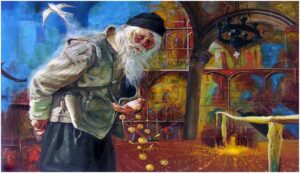 The Case of Fools for Christ
The Case of Fools for Christ 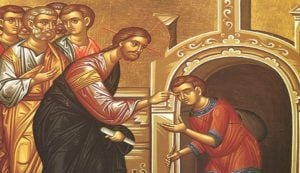 The Blind Man in Jericho
The Blind Man in Jericho 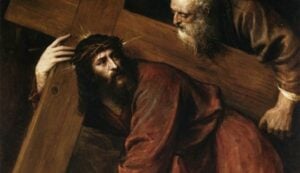 What does it mean to become a Cyrenian?
What does it mean to become a Cyrenian? 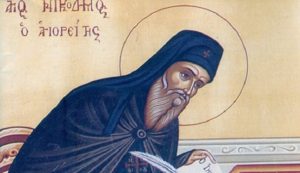 Bad habits and their cure
Bad habits and their cure 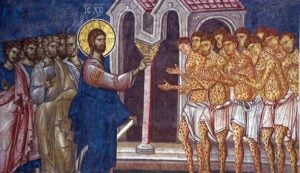 The Ingratitude of the 9 Lepers, an Enduring Passion
The Ingratitude of the 9 Lepers, an Enduring Passion 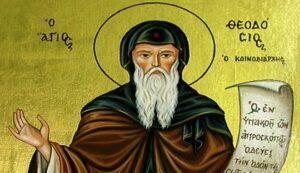 Saint Theodosios the Coenobiarch
Saint Theodosios the Coenobiarch 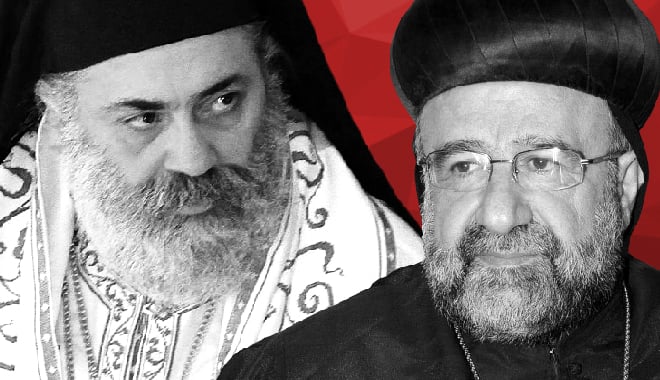 PETITION ON THE ABDUCTION OF THE TWO HIERARCHS OF ALEPPO SYRIA
PETITION ON THE ABDUCTION OF THE TWO HIERARCHS OF ALEPPO SYRIA  PLAY NOW:
PLAY NOW: 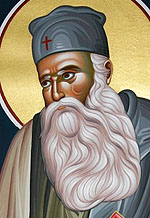
 31 January
31 January



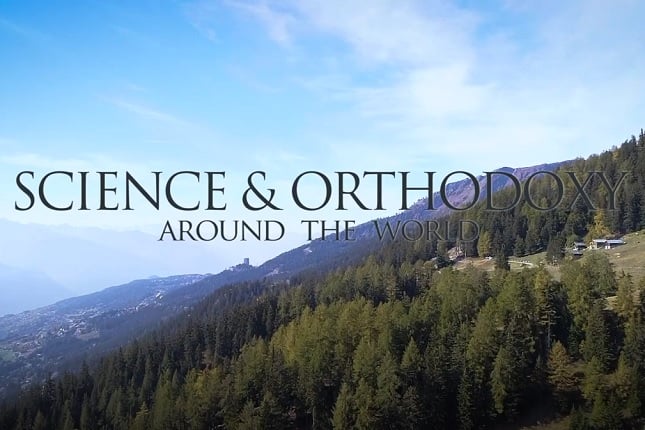
 Nairobi Orthodox Youth Association of Kenya (NOYA)
Nairobi Orthodox Youth Association of Kenya (NOYA)  Science and Orthodoxy around the World – A Documentary Film
Science and Orthodoxy around the World – A Documentary Film  3rd e-Synaxis from Holy Mount Athos with Elder Ephraim and ASCOR- IASI, Romania
3rd e-Synaxis from Holy Mount Athos with Elder Ephraim and ASCOR- IASI, Romania  ‘Follow me’ (Matt 19, 16-26) [part 3]
‘Follow me’ (Matt 19, 16-26) [part 3] 